Meet Eugenia Gorbacheva, an extraordinary art instructor who not only shares a passion for art but also enjoys teaching it.
As a wife and mom, juggling life and running an art-related business can be challenging. Being an art instructor takes a lot of concentration and effort, especially if you’re a one-woman show.
Teaching art is no easy task, requiring visual skills, creativity, and a strong knowledge base.
For a couple of years, I’ve admired my friend Eugenia Gorbacheva. Eugenia is an artist with whom I share a lot in common.
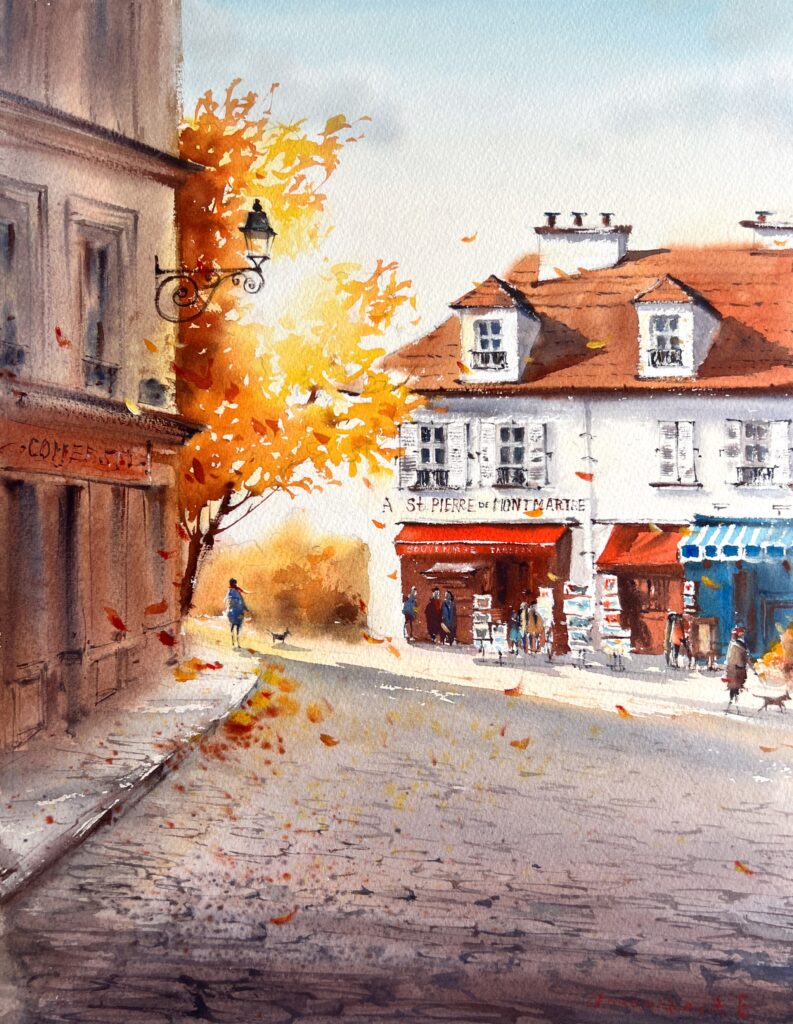
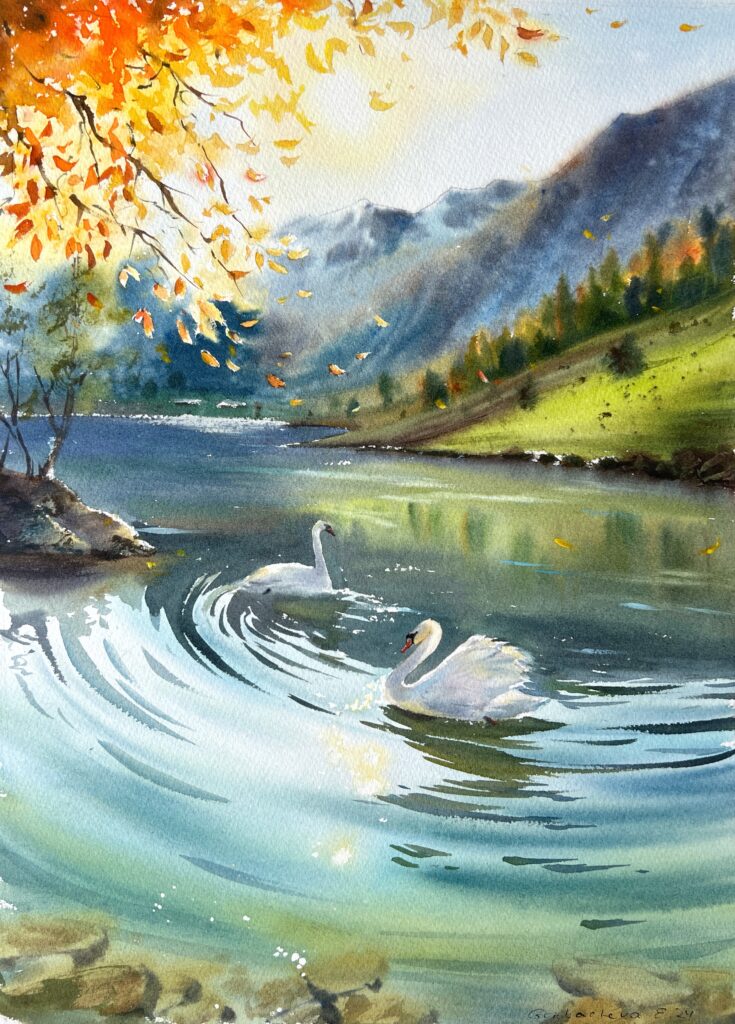
Eugenia has a quick yet impressive painting style. She knows just the right brushstrokes and how to capture the perfect atmosphere in her artwork. She often paints scenes that inspire her, such as views of water, rocky beaches, and beautiful flower gardens.
When I first met Eugenia and heard how she taught herself to paint so fast, I immediately felt a connection. She’s developed a unique style that draws many students to her paintings.
Today, I’d love to introduce you to Eugenia Gorbacheva. Not only as an artist or an art instructor but also as a mom and wife. The person behind the beautiful seascapes you see on her Instagram.
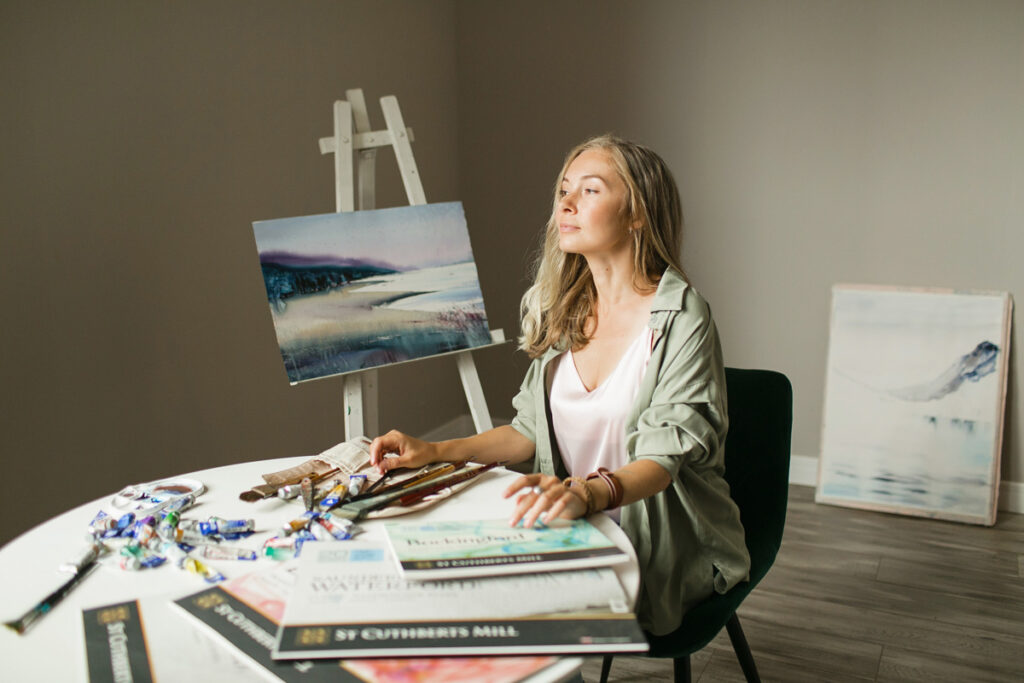
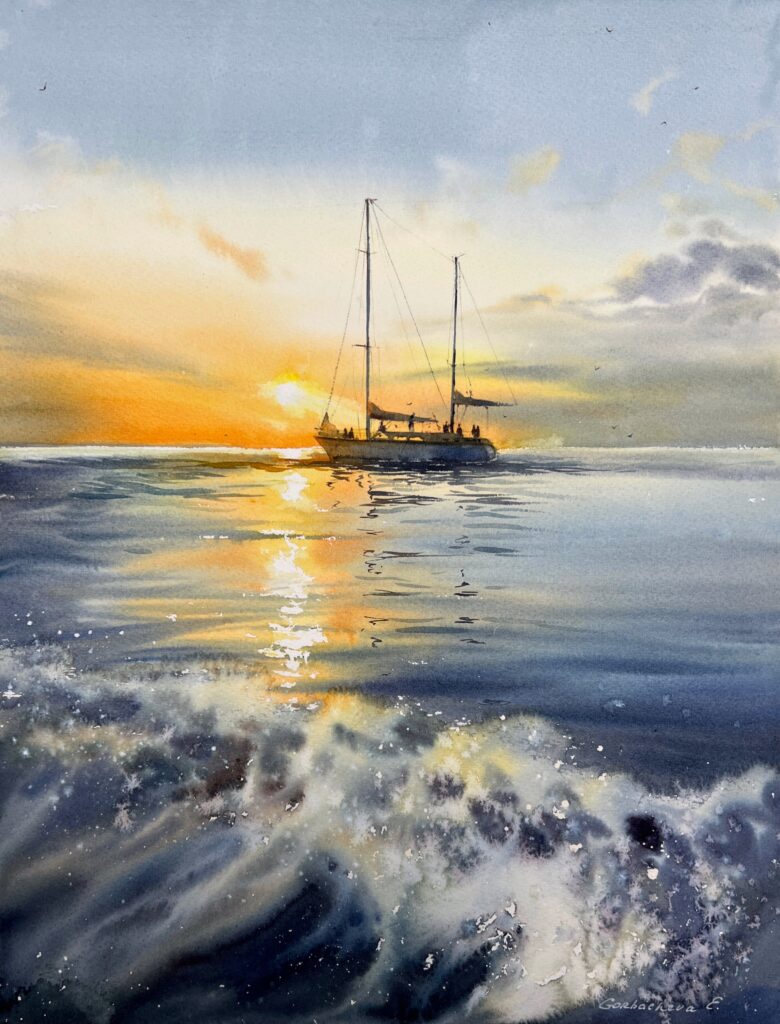
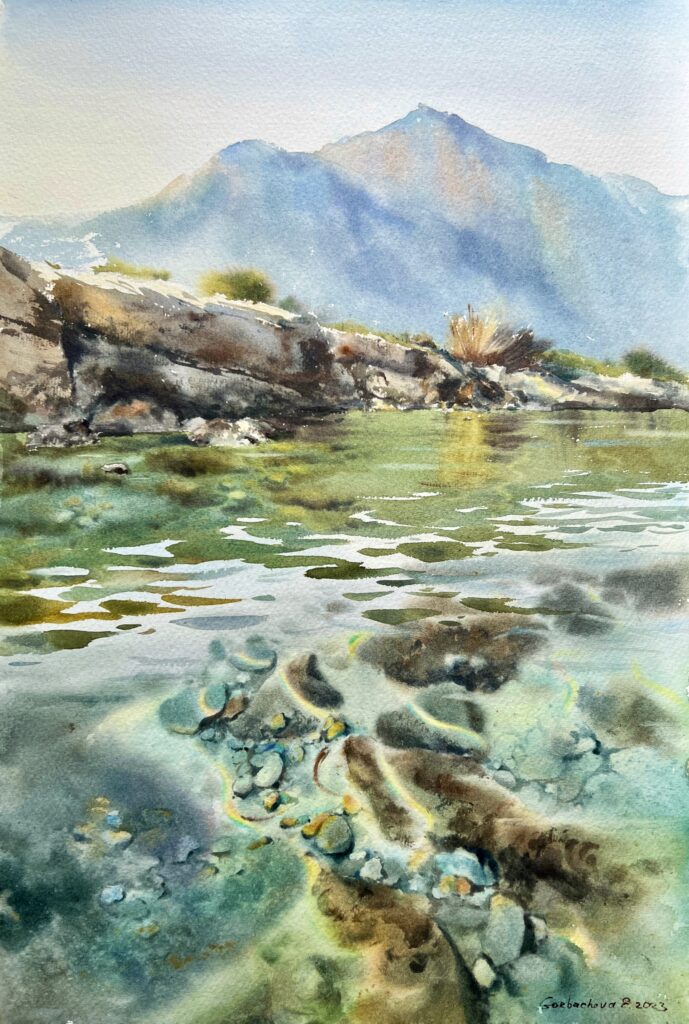
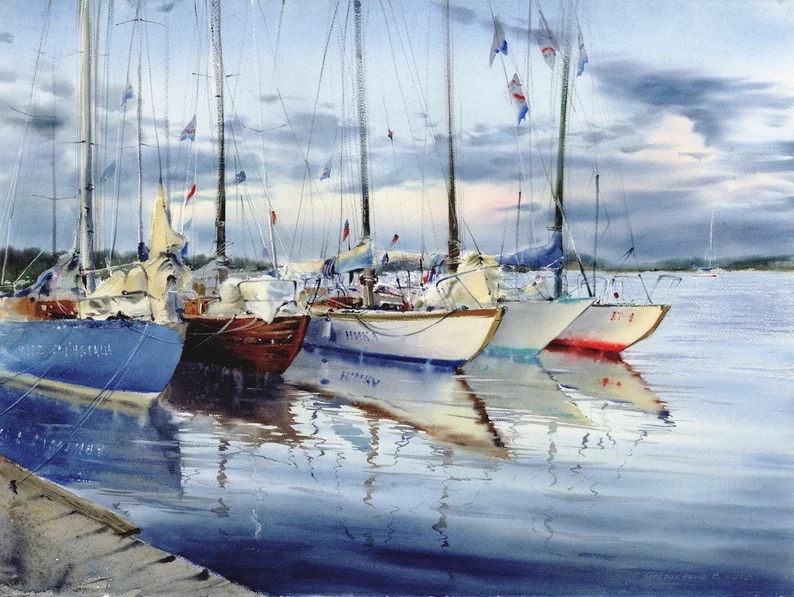
- Eugenia, did you study painting in school?
Yes, I graduated from art school in 1999 and then studied fashion design for five years at university, finishing in 2007. We had watercolor classes at university, but they were quite different—more academic. It wasn’t until I was on maternity leave in 2015 that I truly immersed myself in watercolor, discovered its versatility, and fell in love with it. That year marked the beginning of my self-education and deeper exploration of watercolor, as well as my close connection and friendship with the medium.
- When we first met, I asked about your painting style, your quick brush strokes, and the dry brushing technique that has become your signature. Can you tell us more about the process of the moment you decide to paint something? What are the thoughts that run through your mind, including how much time you are going to spend on painting each piece?
When I see an inspiring scene, either while walking or in a photo on social media, my first thought is, “I need to paint this.” I hold onto that thought and desire until I find the time to paint. Ideally, I try to do it the same day, while the inspiration is still fresh. I set aside other household tasks 🙂
It’s easier if the subject has few details; in that case, I don’t worry about time and quickly paint the scene. A seascape with a sunset, for example, takes me less than an hour. But if the scene is more complex, with yachts or houses, I make sure I have enough time to finish it, as I prefer to complete a painting in one sitting. However, I sometimes do the pencil sketch in advance.
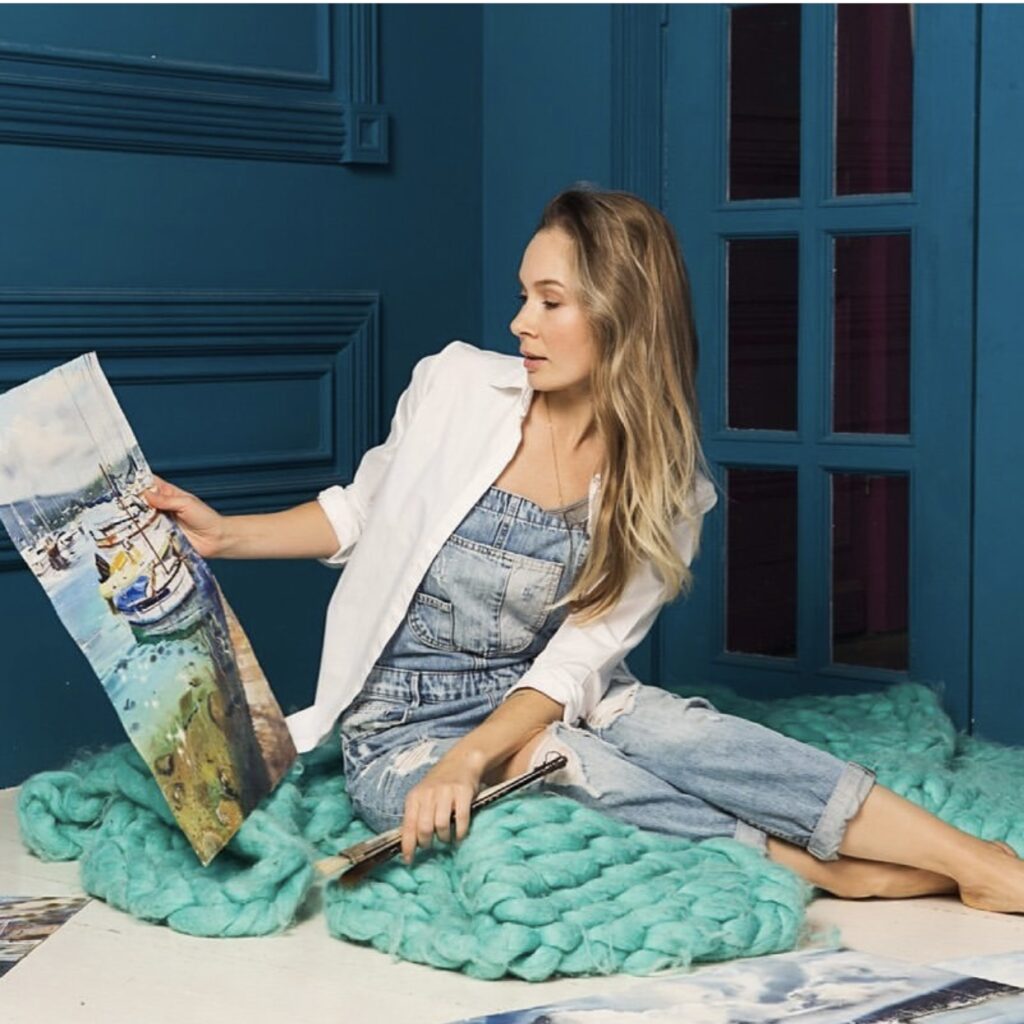
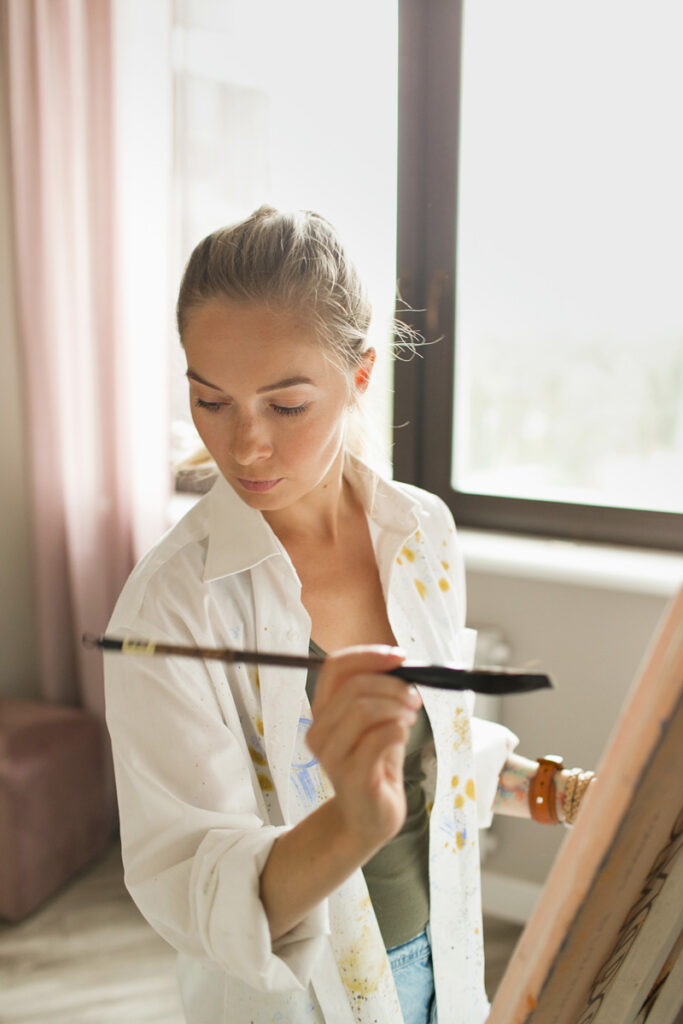
- Do you prefer teaching art live or creating online classes?
I mostly teach online, as in-person lessons take too much energy, and I need time to recover. Still, I hold offline workshops a few times a year, and I regularly prepare recorded lessons—several each month.
- How different are your live classes compared to online classes?
During live workshops, my students and I work almost all day, which is a lot of effort for both me and the students. In one day, I need to demonstrate as many techniques as possible, showing each person in the group how to hold the brush, mix the paint, apply strokes, etc.
- What do you enjoy the most when teaching art in person?
I enjoy live lessons because of the face-to-face interaction with like-minded people who also love watercolor.
- When you look at a reference image, how do you decide what to paint? I often feel the need to crop the image or remove some objects from the reference, taking into account the time it would take to complete the painting. Similarly, it’s important to consider how much time it would take to record a class.
To simplify the image and remove unnecessary details, I avoid zooming in on the photo 🙂 I use photos on my phone or tablet, but I keep the device at a distance so I can’t see the fine details. Capturing the mood is what matters most, not focusing on the details. However, I still often struggle with the desire to overwork the painting with excessive details. I’m still learning how to simplify landscapes.
- What is your favorite size of the paper to paint on?
My usual paper size is A3.
- If you were stranded on an island for a month and could only have three colors, which ones would you choose?
My go-to colors are red (either cadmium red or a new one you sent me—vermilion hue), ultramarine, and yellow. I often use just these three.
- What is your ultimate favorite watercolor technique?
I prefer painting in a single layer.
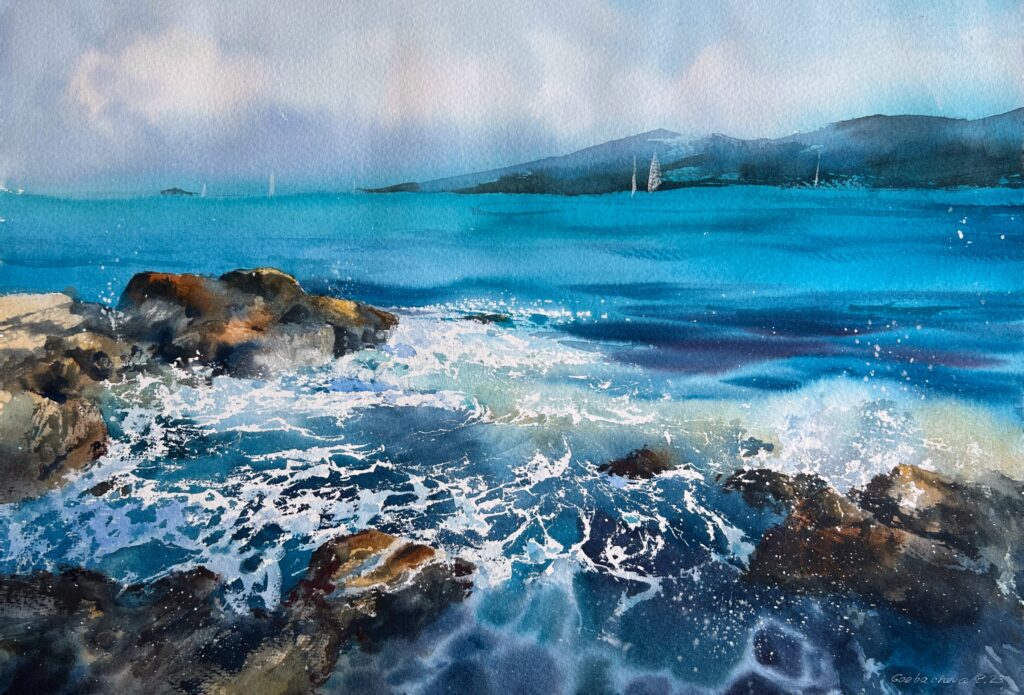
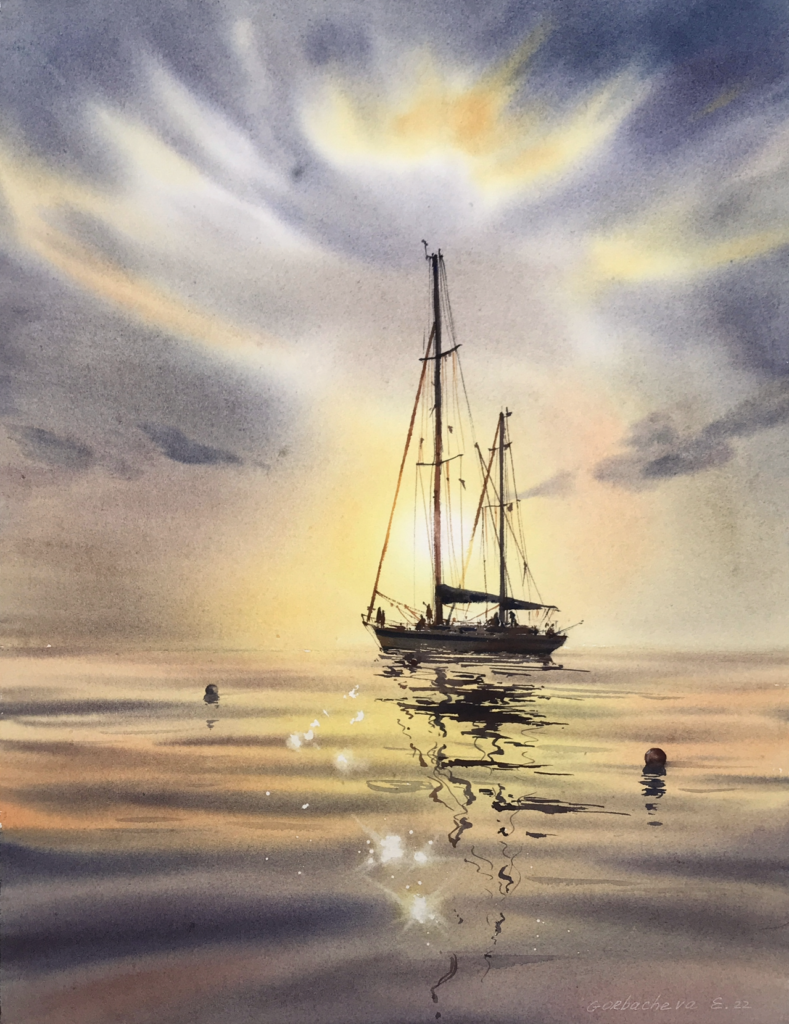
- What is your favorite art tool?
My favorite tool is a Chinese calligraphy brush. I also love using a palette knife.
- I often see that you use clear plastic board underneath your paintings. I already know why since I paint on a glass-top table. What is your perspective on it if you were going to tell someone why they need it?
A plastic board is better than a plastic table because I can lift and tilt the board in different directions, allowing the watercolor to flow where I want it to go. Plastic or glass backings also prevent water from soaking into wooden or cardboard surfaces, keeping the paper moist longer, which is very important for my technique.
- How do you find the balance between being an art instructor and having a family life? Personally, I’ve had to create a routine schedule. If I don’t have a schedule, I struggle to work effectively, and I’m often dissatisfied with the outcome of my paintings. It’s as if every day, when I go to sleep, I need to know that I have a certain amount of time allocated to spend in my studio during specific hours.
I try to wake up very early to walk the dog and get my child ready for school. After that, it’s time for watercolor. Before lunch, I aim to accomplish a lot because it’s important not only to record lessons but also to paint for myself and my soul, without the camera. This is as necessary to me as air. In the afternoon, I return to my duties as a mom and wife. But when I visit my parents in another country (for example, during holidays), they take care of my child. I can paint all day, from morning to evening, sometimes with breaks for lunch, sometimes without. It’s very demanding, but it’s work I absolutely love, and it brings me so much joy and emotion.
Connect with Eugenia Gorbacheva, Art Instructor.
Eugenia teaches on Patreon, at https://vk.com/ev_gorbacheva_art and on her YouTube channel.
Eugenia’s main website: https://eugeniagorbacheva.com/
Find Eugenia on Instagram.
You can buy Eugenia’s Artwork on Etsy.